Rendering carries so many benefits to homeowners that it is no surprise that many property owners decide to render their homes our building. That isn’t a difficult decision, but choosing which render is.
Wet dash might not be your first choice when rendering, but its long-term suitability and popularity mean this is a big hit with homeowners.
If you want to learn more about wet dash, its rough textured finish and why it might be ideal for your house, come and speak with us. WeDoRender offers a wide range of rendering services, and we’re always happy to discuss any job.
Wet dash rendering is also known as roughcast, and it is a rendering system with hundreds of years of service. As its alternative name suggests, this render doesn’t have a smooth finish. Instead, its name hails from the rough finish due to the considerable number of gravel and aggregates that is pre-mixed with render.
When your property is exposed to the elements, this mix provides an added element of protection.
It is also important to say that wet dash render isn’t the same as dry dash or pebble dash, even if the two finishes are similar in the mix.
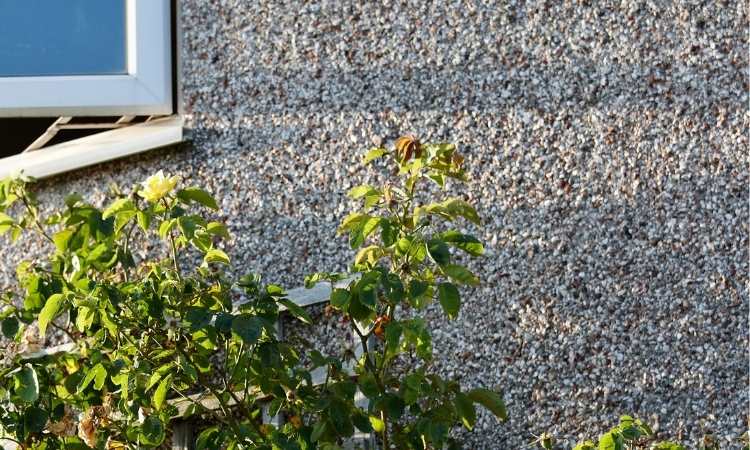

Wet and dry dashing are similar materials in the mix, but the mixes vary depending on a key point or two.
With wet dashing, stones are mixed with stone, sharp granite and cement materials (and sometimes lime), pre-mixed before reaching walls. With dry dashing, the cement and sand render is stuck to walls, and pebbles are stuck.
Dry dashing is more time consuming. It allows for more deliberate placement of aggregate onto walls, but the process involved takes more time. For most property owners, wet dashing is a far more suitable option than pebble dash or dry dashing.
It is no exaggeration to say people placed wet dash on medieval premises, but this rendering style grew in popularity in the 19th century. By the 20th century, pebbledash took over in terms of popularity for a while, but that was not to last.
As we move forward in the 21st century, wet dash is a viable option for many homeowners again, and some reasons behind the rise in popularity include:
These two reasons alone, especially the chance to paint your wall any colour, alongside the sound and heat insulation mean many homeowners love wet dash at home.
Given how many years this render has lasted, it is no surprise to learn there are many benefits of this rendering solution.
If your home is exposed to wind and rain, it needs additional help to remain in good condition. The performance of this render led to it being a leading choice in the north of England and Scotland, protecting homes from harsh weather conditions.
The larger surface area, related to the uneven finish provided by the stones, makes it easier for water to evaporate from the surface of your house. In doing so, water is less likely to make its way through to the property; ensuring homes stay drier.
So, anyone looking for rendering that keeps rain and water out will find wet dash is an excellent option.
Avoiding cracking is vital for all homeowners when it comes to renders, and some key features of this rendering means your property is less likely to suffer from cracks and gaps.
Firstly, wet dash mortar is a fantastic solution, and when it dries, it is less likely to shrink. This alone means cracking is less likely to occur.
Also, the work involved with our mixes and finish creates a more reliable barrier to water seeping through your building.
If you want a smooth finish, you’ll spend a lot of time with a trowel, polishing the surface down to a fine edge. This looks great, but it leads to a greater number of small gaps and tiny cuts appearing on the surface. Over time, there are more opportunities for rainwater to seep through, and for bigger gaps to appear.
Anyone looking for longevity with their render should consider the natural benefits and impact of this material.
You know that wet dash is similar to dry dash, or pebbledash. One difference though is having the stones applied early in the process, is you have more control over the finished look and colours.
If you want a specific colour or style, including green, or if you are looking to create uniformity on your exterior walls, wet dash is the far more dependable material to choose.
If you have a curved property or uneven bit of wall, these advantages become flaws when cracks and gaps appear.
Wet dash render is one of the best ways to cover damaged areas or imperfections of your home. For a quick and easy solution which ensures your home looks great for many years to come, it is hard to argue with the immediate impact of this substance.
Anyone looking for a render with no maintenance will appreciate the lack of work associated with wet dash. If a problem does occur, patching or painting is simple. Also, if you do a quick repair job, it will be hard to see the changes you’ve made, maintaining the overall appearance of the property.
These are all brilliant reasons why homeowners choose wet dash render, and we are here to assist you find your ideal solution. Whether you want guidance on render, contact WeDoRender.
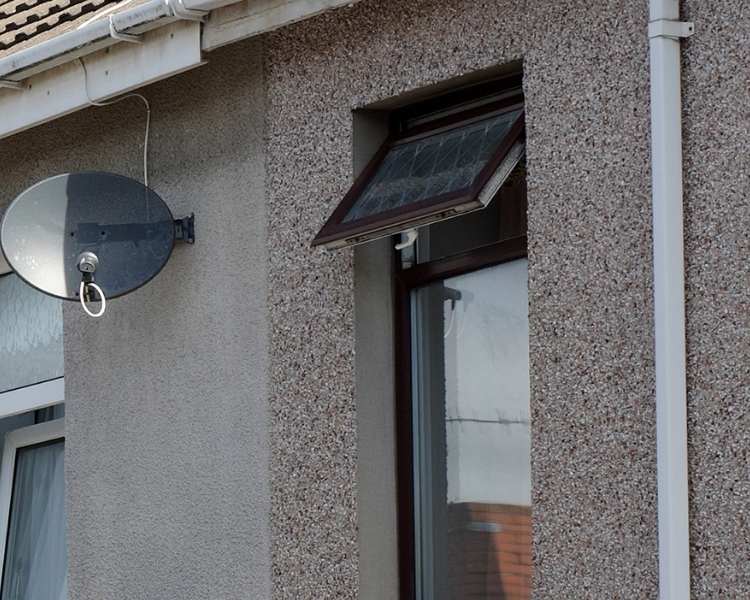
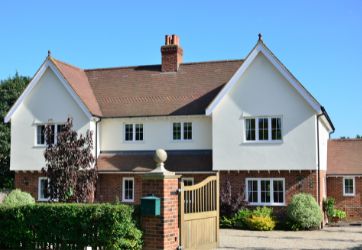
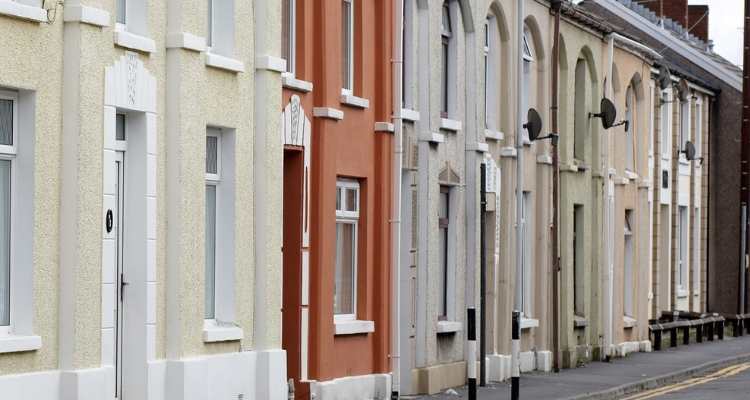
While each application is unique, it is not out of the question to expect 20 to 40 years of service from wet dash render. If you take care of the walls semi-regularly, you can add even more years to the material!
There are plenty of examples of rendering lasting for more than 100 years, so if you want a dependable render, this is a smart option.
Wet dash rendering commonly consists of two to three parts sand, one part cement and one part gravel. These items are mixed, and sometimes lime is added. If you intend to create a new mix to match older render surfaces, try to replicate the formula used at that time, including lime if used.
There is flexibility in whether you use pre coloured white cement or grey cement. Understandably, white cement provides a sparkling finish, but it is often the more expensive texture.
Sharp sand is more commonly used than builders’ sand. This is because the grit in sharp sand repels water and moisture, creating a more robust texture. You can use any size of stone you want (within reason), but don't worry about the same colour.
This is because they are covered by cement mix. It is possible to add a waterproofer to the render, reducing the chances of moisture making its way into the cement later.
Before applying this render, ensure the wall surface is flat and the wall is in good condition.
You should clean the wall of the house, brushing it with clean water to add a level of dampness. You then apply a base coat, or scratch coat with markings in one side of the material, helping the next coat stick to it.
The top coat is applied to the base coat, while the mixture should be slightly thinner or weaker. You don't need uniform thickness with every layer.
Be sure to spray this top coat with water to prevent it from drying too quickly. If render dries too quickly, it can crack ion the sun or rain, and you want to avoid this.
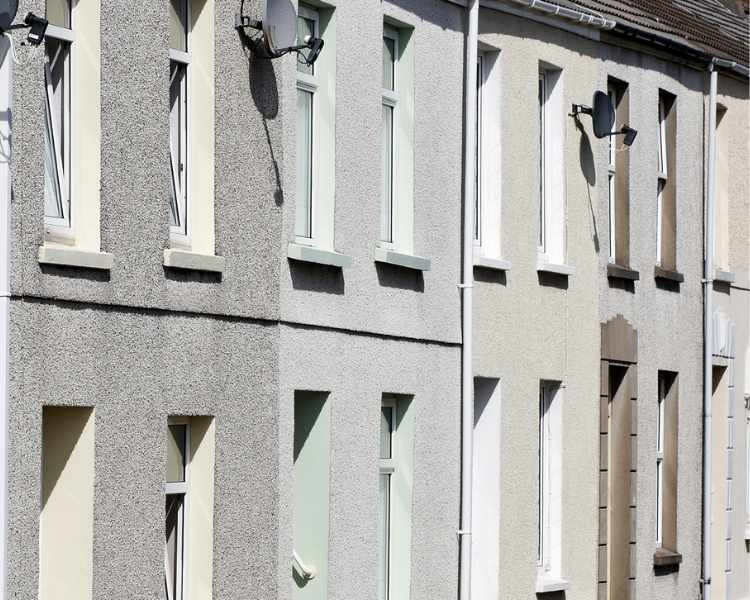
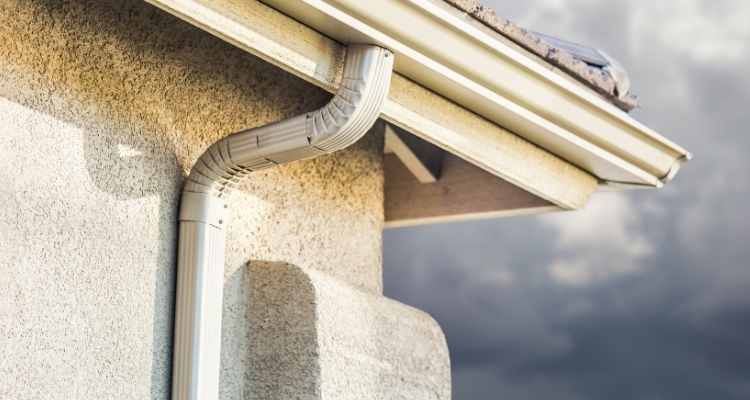
Whether you want wet dashing, dry dashing or any render solution, we can help. WeDoRender provide more options, additional information and an extensive range of render services that provide a durable finish for your property. Contact us today for all render work and assistance.

The cement and sand mixture is put to the walls before the pebbles are adhered to them in dry dashing. The stones are mixed into the cement and sand mixture before being applied to the walls with wet dashing.
The most typical external finish found on traditional architecture in Ireland is the lime coating known as harling or wet dash. The harling material is a slurry-like mixture of aggregates and lime that is applied in a fluid condition.
It is usually white or grey in colour (depending on the cement used).
Yes, wet dash/roughcast is a good, long-lasting method of waterproofing and protecting portions of a building that are vulnerable to adverse weather.